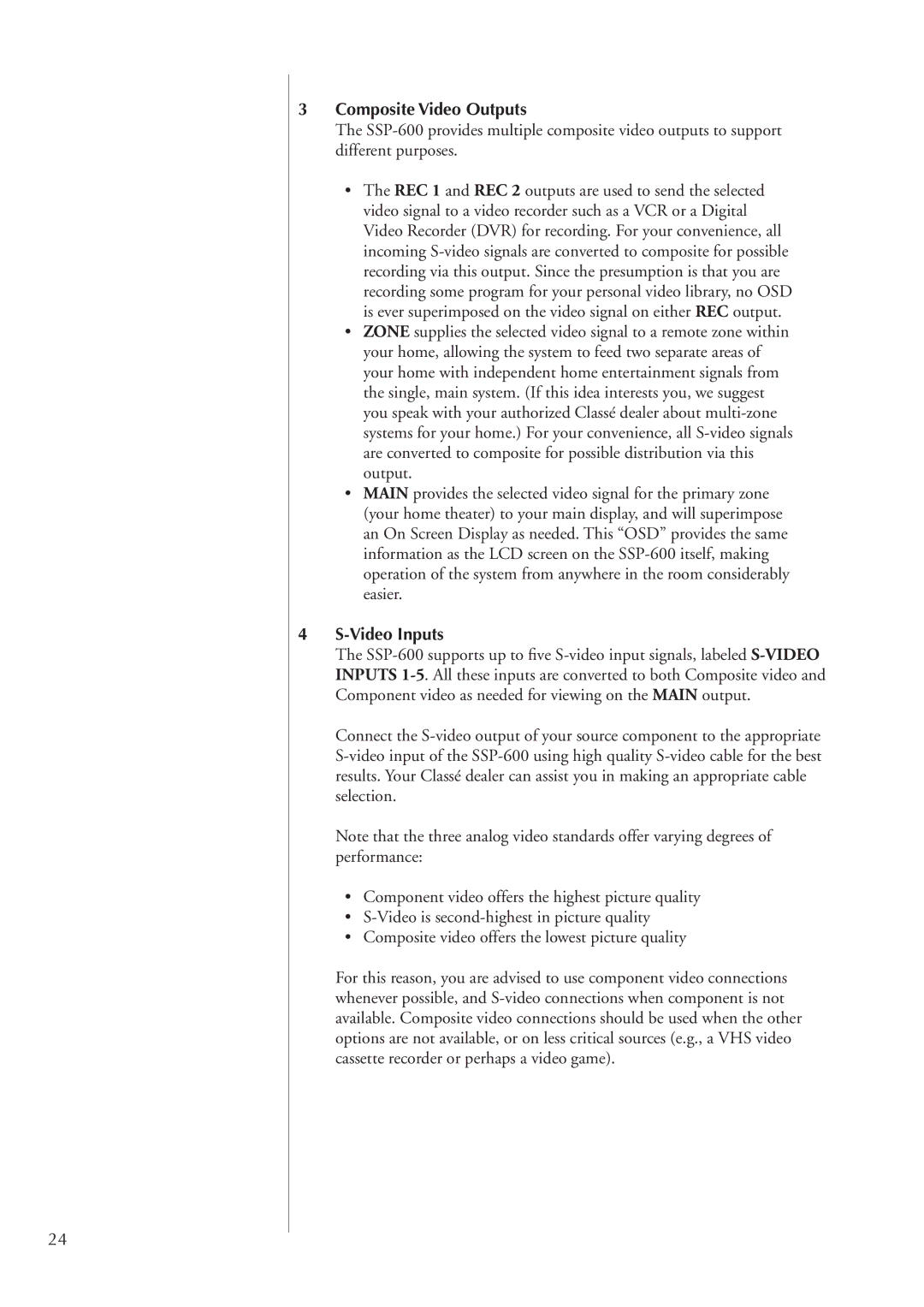3Composite Video Outputs
The SSP-600 provides multiple composite video outputs to support different purposes.
•The REC 1 and REC 2 outputs are used to send the selected video signal to a video recorder such as a VCR or a Digital Video Recorder (DVR) for recording. For your convenience, all incoming S-video signals are converted to composite for possible recording via this output. Since the presumption is that you are recording some program for your personal video library, no OSD is ever superimposed on the video signal on either REC output.
•ZONE supplies the selected video signal to a remote zone within your home, allowing the system to feed two separate areas of your home with independent home entertainment signals from the single, main system. (If this idea interests you, we suggest you speak with your authorized Classé dealer about multi-zone systems for your home.) For your convenience, all S-video signals are converted to composite for possible distribution via this output.
•MAIN provides the selected video signal for the primary zone (your home theater) to your main display, and will superimpose an On Screen Display as needed. This “OSD” provides the same information as the LCD screen on the SSP-600 itself, making operation of the system from anywhere in the room considerably easier.
4S-Video Inputs
The SSP-600 supports up to five S-video input signals, labeled S-VIDEO INPUTS 1-5. All these inputs are converted to both Composite video and Component video as needed for viewing on the MAIN output.
Connect the S-video output of your source component to the appropriate S-video input of the SSP-600 using high quality S-video cable for the best results. Your Classé dealer can assist you in making an appropriate cable selection.
Note that the three analog video standards offer varying degrees of performance:
•Component video offers the highest picture quality
•S-Video is second-highest in picture quality
•Composite video offers the lowest picture quality
For this reason, you are advised to use component video connections whenever possible, and S-video connections when component is not available. Composite video connections should be used when the other options are not available, or on less critical sources (e.g., a VHS video cassette recorder or perhaps a video game).
